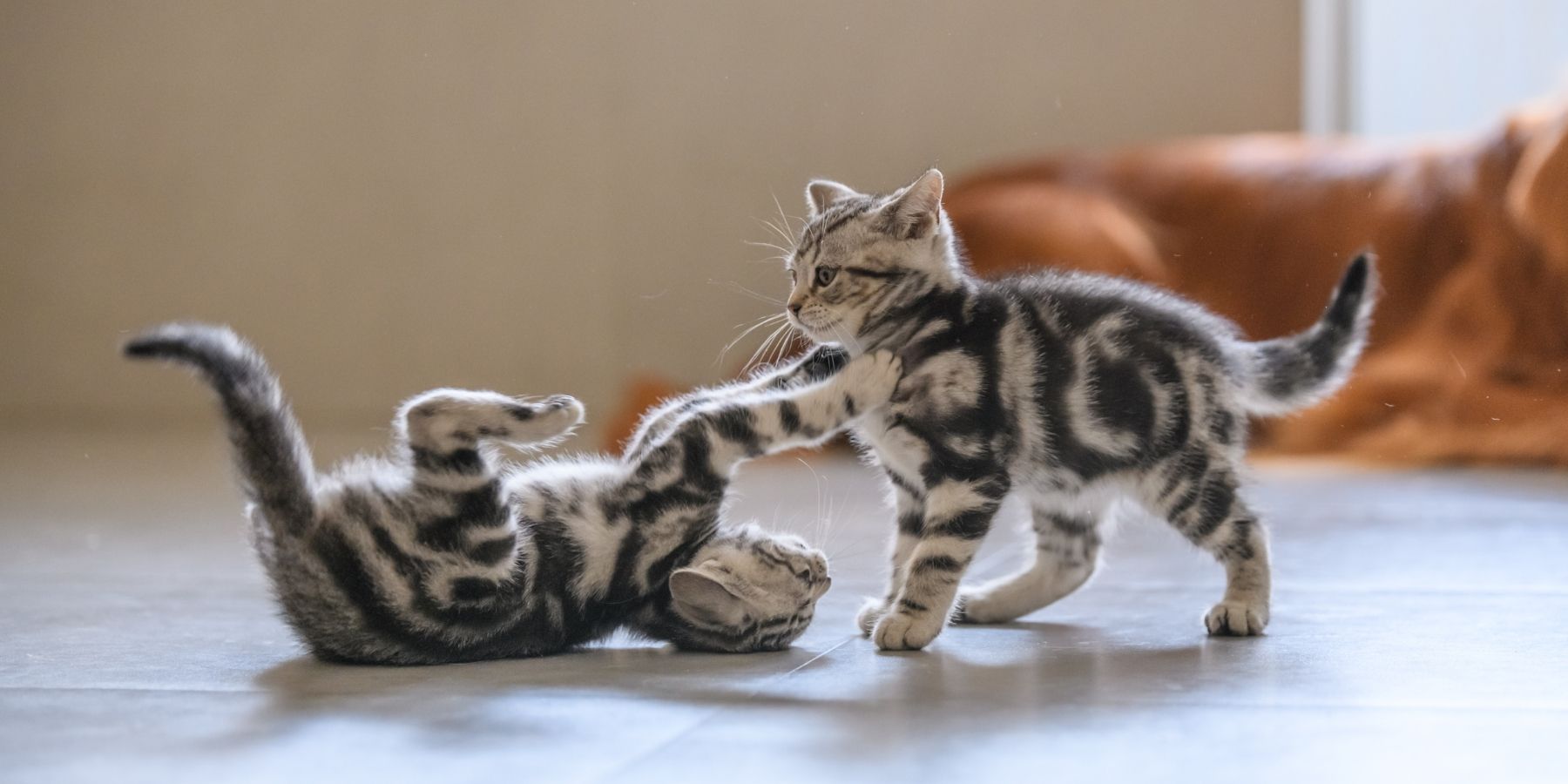Cats are naturally playful, but it's important for owners to discern between harmless fun and potential aggression. This article aims to guide you in understanding your cats' behavior and knowing when to intervene for their safety.
Understanding Cat Play
Soft Bites: Gentle biting without causing harm.
Retracted Claws: Keeping claws sheathed to avoid injury.
Chase Games: Common and harmless part of the play.
Recognizing When Play Turns Aggressive
When cats play, it's often a joyous display of their natural instincts. However, there are times when this play can take a turn towards aggression. Recognizing these signs early can help prevent potential injuries and maintain a harmonious household.
Loud Vocalizations: While cats can be vocal during play, certain sounds signal a shift to aggression. Growling, hissing, and yowling are clear indicators of hostility or fear. These sounds are a cat’s way of communicating discomfort or a warning to back off. If you hear these noises, it's time to pay close attention to their interactions.
Exposed Claws: In playful encounters, cats usually keep their claws retracted to avoid hurting each other. When you notice that one or both cats have their claws out, it's a sign that they are preparing for a real fight. Exposed claws can cause significant injuries, so this behavior should not be overlooked.
Intense Staring: Cats communicate a lot through body language. An intense, fixed stare between cats can be a precursor to a fight. This kind of stare-down usually occurs when a cat feels threatened and is preparing to defend itself. Unlike the relaxed and brief glances exchanged during play, these stares are prolonged and tense.
Body Posturing: Pay attention to their body language. An arched back, puffed-up fur, and sideways orientation are defensive postures that indicate fear or aggression. These postures are a cat's way of making themselves appear larger to intimidate the other cat.
Swatting or Slapping: While a little bit of paw action is normal in play, watch for more forceful swatting or slapping. If one cat is repeatedly hitting the other, especially if the recipient looks like they're trying to escape or hide, it's a sign that the interaction is no longer friendly.
Intervention Strategies
Distraction Techniques: Redirect their attention with toys.
Separation: Temporarily place them in different rooms.
Avoid Physical Punishment: This can worsen the situation.
Preventing Future Tussles
Sufficient Space: Ensure they have their own personal space.
Separate Resources: Individual feeding and litter areas.
Regular Playtime: Helps use their energy positively.
Recognizing Stress in Cats
Hiding: Excessive hiding can be a stress indicator.
Eating Habits: Changes in eating patterns may signal stress.
Over-grooming: A common stress response.
Conclusion
Discerning between playful and aggressive behavior is vital for your cats' well-being. By understanding and appropriately intervening, you can foster a safe and harmonious home for your feline friends.
FAQs
Q: How to tell if cats are playing or fighting?
A: Play is quiet, with soft bites and retracted claws. Fighting involves noise, exposed claws, and intense stares.
Q: What should I do if my cats fight?
A: Distract them or separate them, and avoid physical punishment.
Q: Can toys prevent catfights?
A: Engaging toys can reduce boredom and aggression.
Q: Is some rough play normal among cats?
A: Yes, but it should not escalate to aggressive behavior.
Q: How can I reduce my cats' stress to prevent fights?
A: Provide a calm environment with enough space, and separate resources, and monitor for stress signs.


